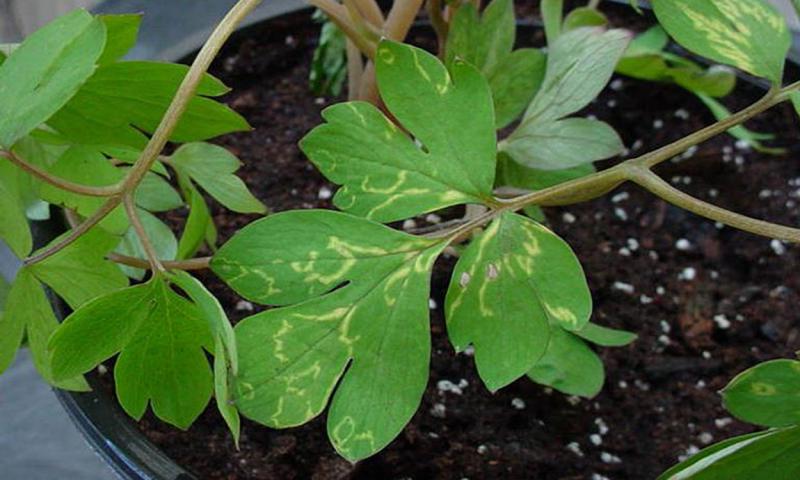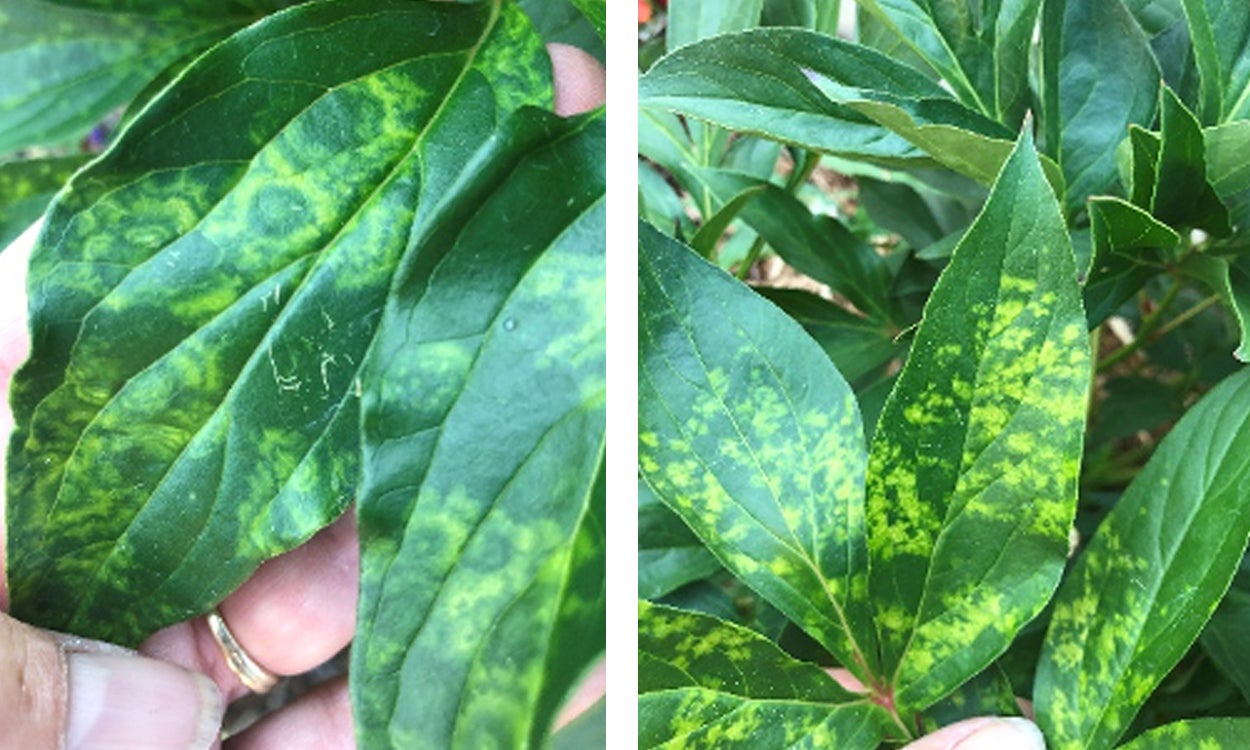Written collaboratively by Madalyn Shires and Sara Ogan.
Introduction
Tobacco rattle virus (abbreviated as TRV) is a common ornamental and vegetable virus. Some of the common ornamental hosts are bleeding hearts (Figure 1), peonies, tulips, marigolds, and hostas.

Common vegetable hosts include beans, peppers, potatoes, and beets. Tobacco rattle virus is also called peony ringspot virus, potato corky ringspot virus, and aster ringspot virus.
Viral Information
Tobacco rattle virus is in the genus Tobravirus, which has two other viral species in it. TRV replicates in the cytoplasm of plant cells and then moves from cell to cell until it reaches the phloem, starting a systemic infection. Systemic infection of plants means that all plant parts are infected, including roots, crown tissue, and leaves.
Symptoms
At least 40% of infected plants are asymptomatic, meaning that the plants have the virus but do not ever develop symptoms. This can make control of the virus very difficult, as asymptomatic plants are still able to serve as a source of TRV. When plants do develop symptoms, the most-common associated symptom for ornamentals is ringspot on leaves (Figure 2, Figure 3). In vegetables, ringspot, mottling, and necrotic fleck symptoms may also be observed. These symptoms are very common for all viruses, so it is important to submit plants for diagnostic testing if an accurate diagnosis is needed or desired. The affected host can also be a clue to the type of virus that is causing symptoms, as many viruses are host specific.
In Hostas

In Peonies

Transmission
TRV is transmitted from infected plants to healthy plants in two ways. The most common movement is through stubby-root nematodes. Nematodes are free-living roundworms that move through the soil and feed on plant roots. The other method of viral spread is mechanical transmission. Mechanical transmission occurs whenever infected plant leaves touch or rub uninfected plant leaves through use of unclean tools that have virus particles on it, or through plant sap.
Management
Unfortunately, there is no cure or treatment for viral infections in plants. To prevent the spread or movement of TRV, the soundest management practice is to remove symptomatic plants and to continue to monitor for new symptoms. Transmission of the virus can be slowed by utilizing good plant spacing to prevent touching, cleaning all garden and yard tools between each planting, and by not touching uninfected plants after contact with infected plants. It is impossible to treat or prevent nematodes in the soil, so there is no need for chemical or biological control in the soil. If TRV infections have been severe in an area, a soil test can be performed by plant diagnostic clinics to determine the number of stubby-root nematodes that are in an area.
References
- Bonkowski, J. 2021. Tobacco Rattle Virus (TRV). Purdue University Landscape Report, Issue 21-07.
- De Jong, W. Tobacco Rattle Virus (TRV)- Biology. Cornell University Publication.
- South Dakota Plant Diagnostic Clinic.
- Zweig, R. & Hudelson, B. 2010. Tobacco Rattle. Wisconsin Horticulture #XHT1180.


